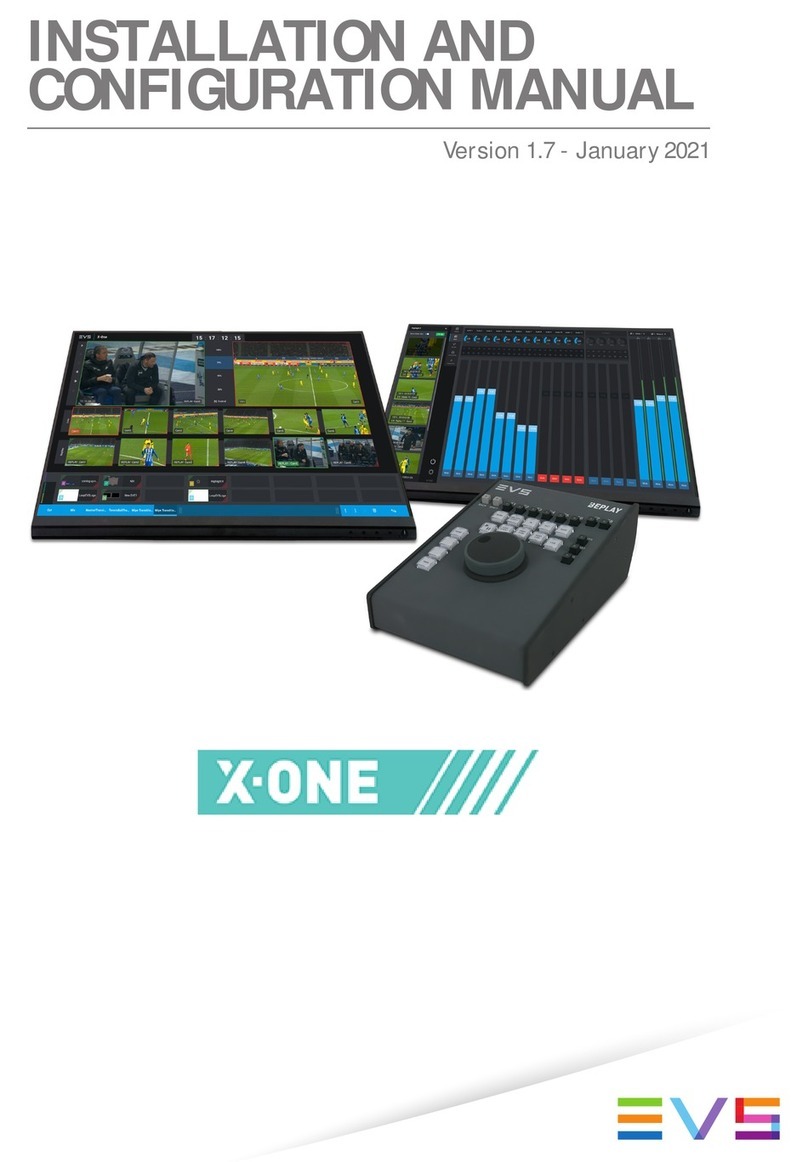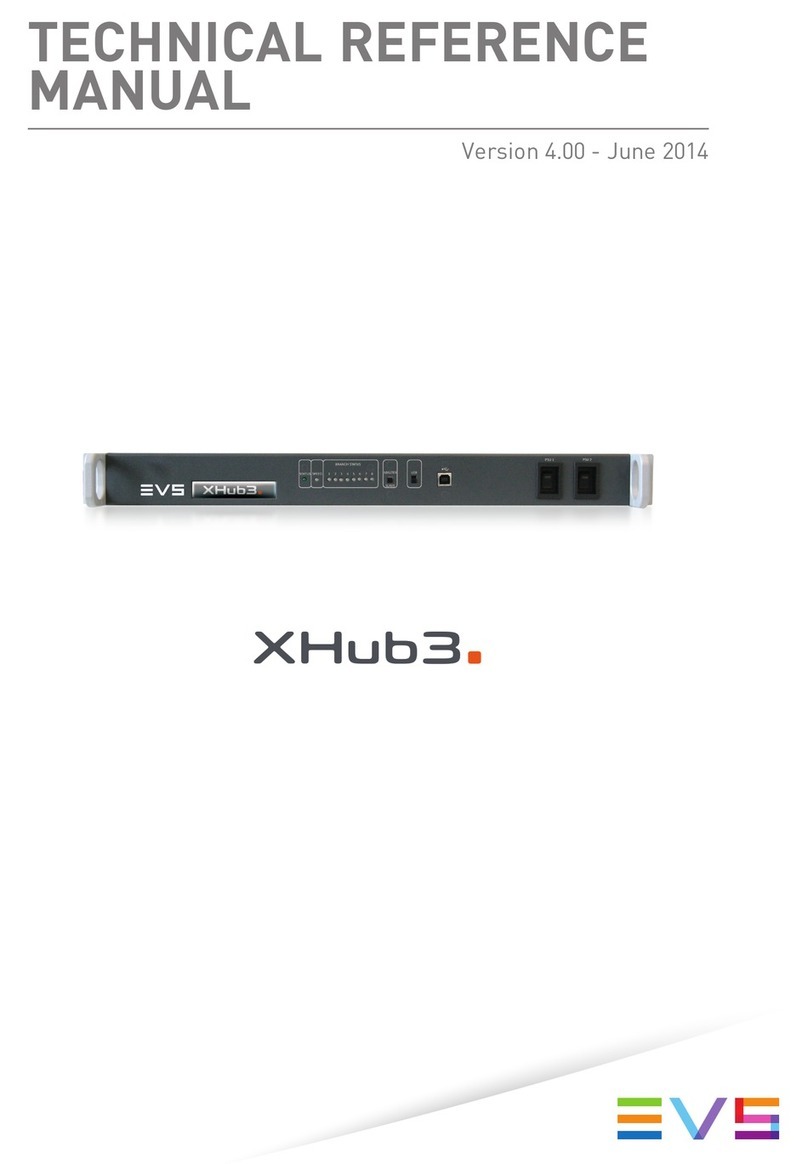
EVS Broadcast Equipment SA
Issue 2.0.7.2 September 2021
Dyvi
5.3.3 GUI PC...................................................................................23
6. PROCESSING MODULE INSTALLATION AND CABLING .............24
6.1 Rack Mounting...................................................................................24
6.2 Processing Module Front Panel Description PMY2-5D-3216 ............25
6.2.1 Front Panel.............................................................................25
6.2.2 Front Control Panel................................................................25
6.3 Processing Module Rear Panel Description – PMY2-5D-3216..........27
SDI Rear Panel Overview..................................................................27
6.3.1 Standard Backplane Interfaces..............................................27
6.3.2 SDI I/O Board v2.2 (allowing 32×16 per PM).........................31
6.3.3 Graphics Card........................................................................34
6.3.4 Network Card – Supported New PM......................................36
7. CONTROL PANEL INSTALLATION, CABLING AND
CONFIGURATION ...................................................................................41
7.1 Control Panel Rear Description..........................................................41
7.1.1 Power Supply.........................................................................41
7.1.2 Ethernet Switch......................................................................41
7.1.3 Panel LAN Interface...............................................................42
7.1.4 USB Interface.........................................................................42
7.1.5 Earth Terminal........................................................................42
7.2 Control Panel Configuration...............................................................43
7.2.1 Changing the Control Panel Background Image....................43
8. GUI INSTALLATION AND CONFIGURATION .................................44
8.1 GUI PC Minimum Requirements........................................................44
8.2 Installation..........................................................................................44
8.3 Network Configuration .......................................................................48
8.3.1 Network Settings....................................................................48
8.3.2 Dyvi Cluster Settings..............................................................50
8.4 Reset Device......................................................................................50
8.5 Launch the Dyvi GUI..........................................................................50
8.6 Downloading GUI Log Files ...............................................................51
9. NETWORKS......................................................................................52
9.1 Introduction........................................................................................52
9.2 Control Network.................................................................................52
9.3 PM Network (High-speed network)....................................................52






























